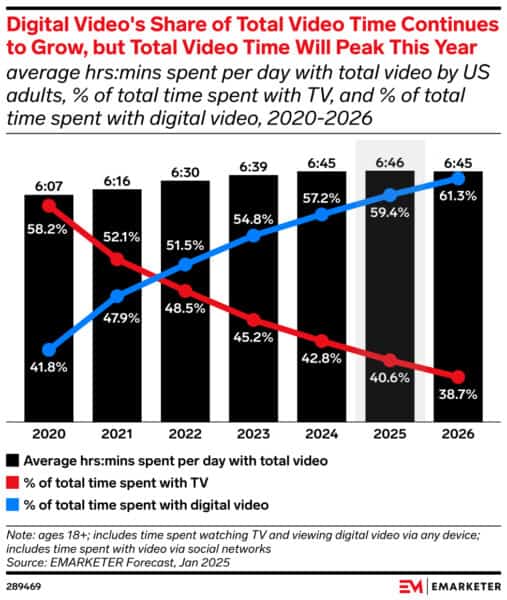
Recently, we spoke to the CMO of a B2B tech company who shared the following concerns about their brand’s video efforts:
- They had a video archive, but the content was underutilized.
- Their competitors were investing in video to increase their share-of-voice on YouTube, LinkedIn, and Google video search results.
- Their competitors were making bold claims in their videos to fuel their earned media.
The CMO worried that, without a sound video strategy, their leadership position could erode and they’d fall behind in other strategic areas such as lead gen, retention, and hiring.
This was our approach, beginning with a video audit.
Step 1: Objectives, Audiences, Messages, Channels
We began by asking these questions:

- What are the company’s goals?
- Which audiences does the company want to reach?
- How does the company want to leverage its video content?
- What key messages do they want to convey in their video content?
We also researched where the company’s customers and prospects spend the most time online to help us understand which distribution channels to prioritize.
Step 2: Competitive Research
We created a scorecard to benchmark the company against its competitors. The scorecard included diagnostics like audience size, viewership, engagement, etc. We also ranked each company on a 1-5 scale relative to:
- Content frequency & volume
- Production quality & storytelling
- Diversity of content
- Views & engagement
- Earned media & PR
To address the client’s concerns about search rankings, we reviewed the Top 5 non-brand keywords that the company wanted to rank for on YouTube and the Google video tab. For each query, we listed the rankings and compared the companies’ results, segmenting by earned vs. owned video content.
(Sidenote: If you’re not focused on the searchability for your videos, consider the growth of AI overviews in search. According to Search Engine Land, YouTube citations in Google AI Overviews grew 25.21% from Jan. 2025 – Feb. 2025.)
Step 3: Content Gap Analysis
We watched each video in the company’s content library and categorized the assets based on:
- Title
- Objective(s)
- Key elements
- Featured customer (if applicable)
- Location(s)
Then we mapped each video against the company’s overarching goals. This helped us understand where gaps existed and how the content could be utilized or repurposed to support the company’s objectives.
Step 4: SWOT Analysis
We used the competitive research and gap analysis, along with some internal brainstorms and platform trends, to list strengths, weaknesses, opportunities, and threats as it relates to the company’s current video efforts.
Most of our time was spent on identifying opportunities, and we segmented these by:
- Tactics
- Messaging
- Content Mix
Step 5: Video Strategy
A video strategy takes the findings from the audit and transforms it into a plan of action.
We distilled the brand’s video strategy into two pillars: Storytelling and growth.
For storytelling, we defined specific content categories and formats to help the brand achieve its goals. And for growth, we customized a best practices guide to help the brand expand the reach of its content, maximize the value of its content across earned and owned channels, and develop a bigger audience.
Lastly, we set time-bound goals for the brand to track its progress.
How To Apply The Video Audit And Strategy
Here are two immediate ways that the CMO used the audit and strategy:
- The audit used data to underscore the CMO’s concerns, and it helped the company build consensus internally on where to invest and which resources to invest in.
- The strategy gave the brand a framework to guide its video efforts rather than a reactive, haphazard approach.
From there, it was relatively straightforward for the CMO to create a content calendar and execute the strategy because the blueprint was set.
Does your brand need a video audit? Have a video strategy, but you need help creating more videos? Contact [email protected] to learn more.



